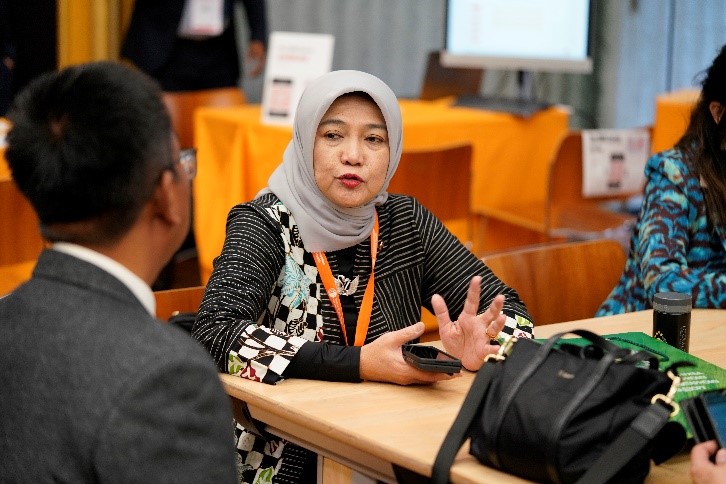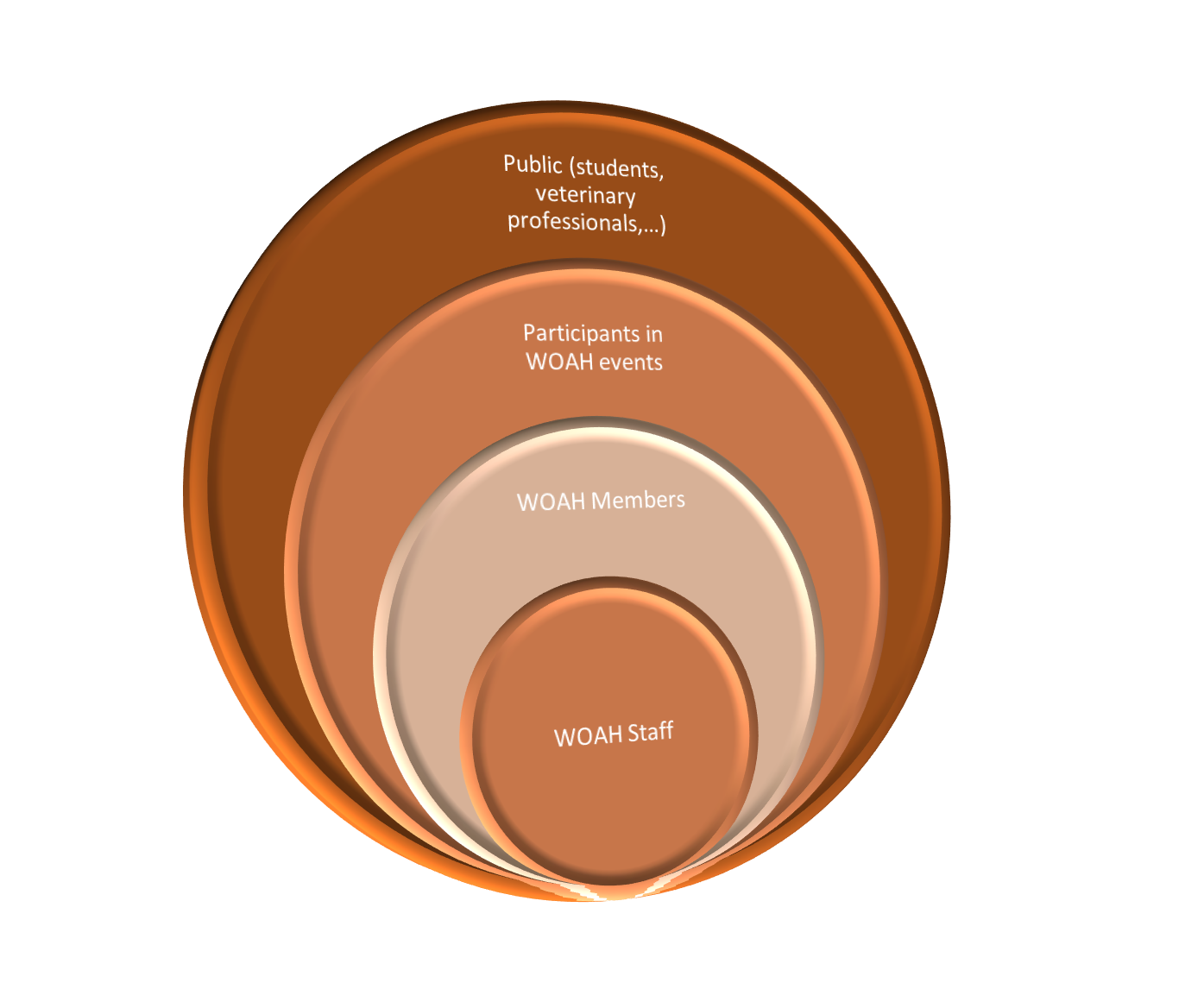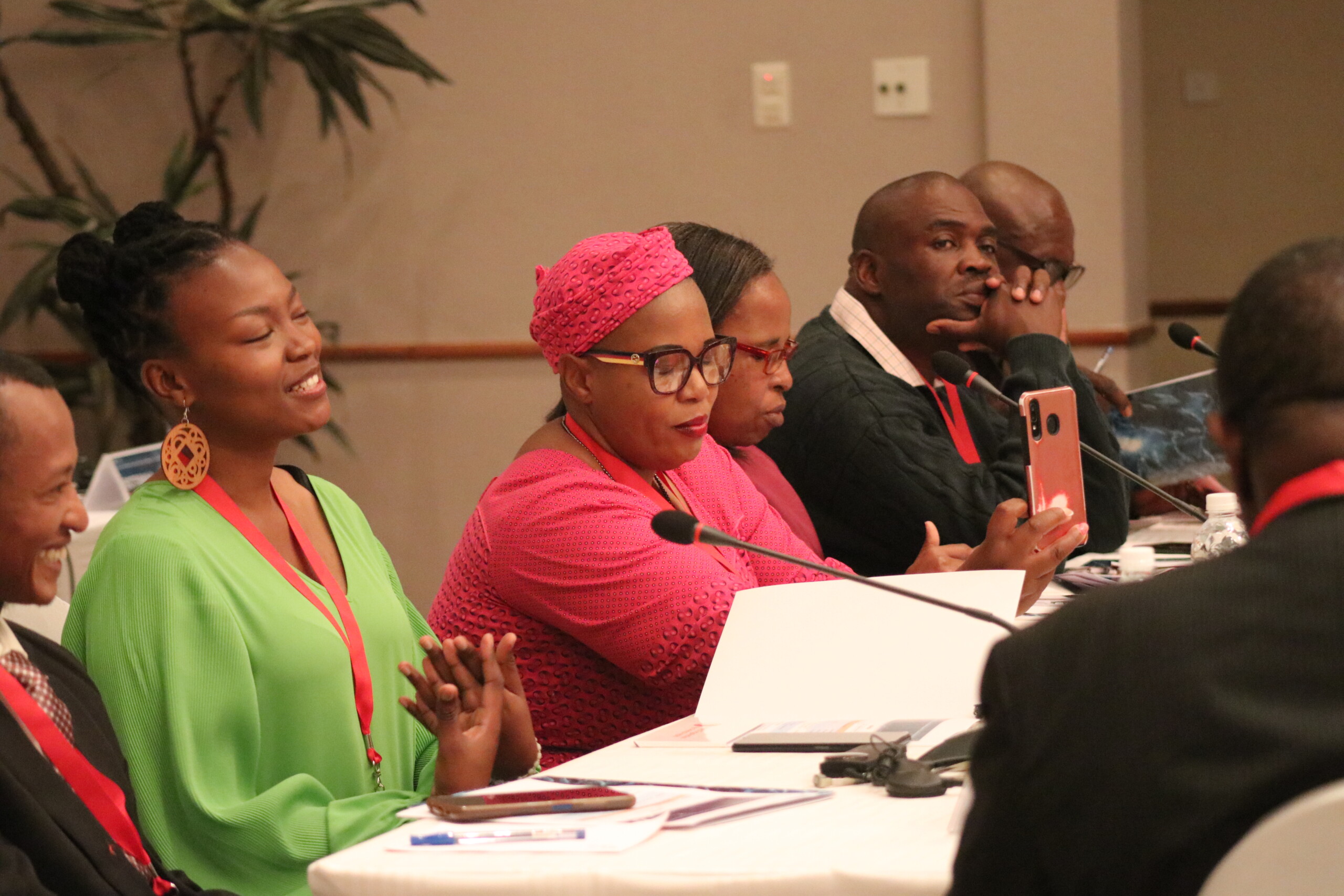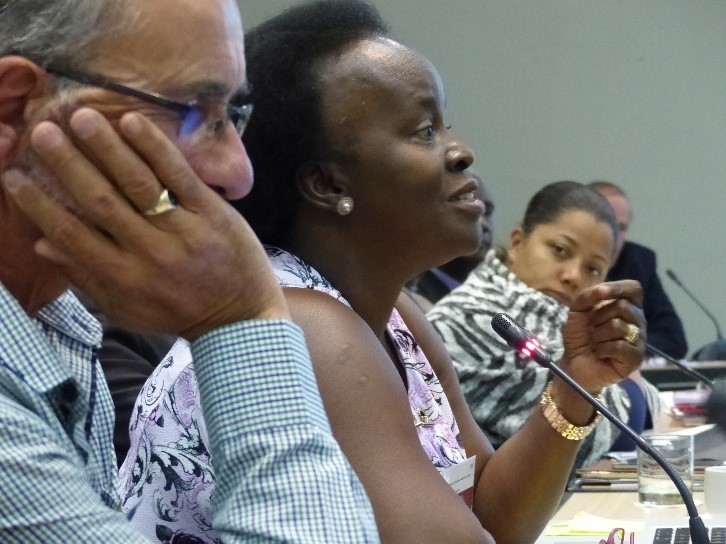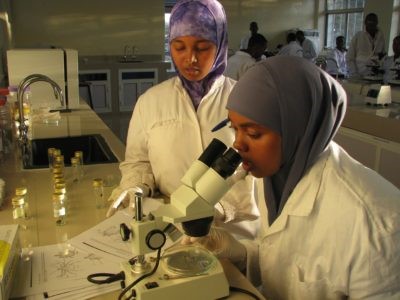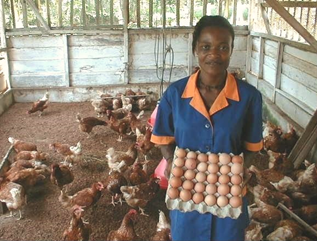The WOAH Gender Task Force (GTF) was established in 2021 as a voluntary entity within the Organisation to identify current knowledge and competencies related to gender amongst WOAH staff and programmes, build awareness, identify staff training needs, and engage Members (countries and territories) to address gender in Veterinary Services using evidence. The GTF’s “data” workstream started work in early 2023 with the support of the Data Integration Department (DID). The workstream was entrusted with the collection of sex disaggregated data from sources within the Organisation.
Four circles or spheres of influence were identified, three of which were studied :
a) The staffing of the Organisation and the appointment of experts (consultants) under the Performance of Veterinary Services (PVS) Pathway.
Gender parity, equality or inequality in these cases is a direct result of the hiring policy (staff) or recruitment / selection policy (consultants) of the Organisation, though it can be influenced by socio-cultural imperatives, depending on the country or region of hiring or recruitment, i.e. the acceptability of gender categories to the target audience of the Organisation, or the reason for recruitment.
b) The appointment or designation of WOAH Delegates (by Principal Secretaries, Cabinet Secretaries or Ministers of the line-ministry) and the designation of WOAH Focal Points (by Delegates) at country or territory (Member) level.
Appointments of these country representatives is not under the direct control of the Organisation, but is probably a reflection of the attitudes to gender adopted at Member country or territory level.
Less obvious is the gender representation in the (elected) technical and scientific bodies of the Organisation, such as the constitution of ad-hoc groups (hand-picked members of small temporary study groups), working groups (elected standing committees, of which there are two) and the specialist commissions (elected standing commissions, of which there are four). These are individuals who are either selected or elected based on their scientific and technical profile. Again, (s)election criteria list language (English is a must), geographical diversity, but not gender equality or parity.
The same applies to the body of experts, recognised by the Organisation, as either Designated Experts of WOAH Reference Laboratories or as Contact Points of WOAH Collaborating Centres. In all these cases, gender balance is a result of the candidates that are put forward by the WOAH Delegates of the Member, along with the Directors of the said Reference Centres and is a reflection of the possible gender bias in senior positions in the national agricultural research systems (NARS) and academia.
Launch of the Regional Aquatic Animal Health Network (Southern Africa) Lusaka, Zambia
Participants in a regional aquatic animal health meeting in Lusaka, Zambia. Picture © P. Bastiaensen (woah) 2023
c) Where WOAH events are genuinely open to the public, attendance is a reflection of the gender representation in the wider veterinary community and may only be positively or adversely influenced by cross-cutting barriers, i.e. financial barriers, travel barriers (visas), geographical or religious barriers, but not by gender-related terms and conditions, except for the willingness, availability or capability of women to attend such events in person, whilst having the care of children, elderly, or other family members. In this respect, gender representation in online events is expected to be different from face-to-face events.
d) The fourth sphere of influence, the veterinary profession at large and the student body, was not included in the study.
Various information sources were used to generate the below data, depending on the type of data researched. Where possible, datasets were compared over a decade to identify trends, using data from 2013 and 2023. In the past, datasets have not systematically or historically been disaggregated by gender/sex, so several techniques were used to assess participants’ gender, using electronic or handwritten lists of participants, as well as reference lists of typical female first names and other tools. For older data, much relied on image internet searches, based on the full name of the individual, if not the first name only. Whereas languages with grammatical gender, such as French (Mme, Mlle, but also Dre or Directrice), Portuguese and Spanish (Sra, Dra or Directora), were often easier to collect data on, results were frequently complicated due to the use of gender-neutral forms for occupational terms (Dr, Prof.). In a very few instances, WOAH staff members, familiar with the region or the country, were asked whether they knew the person and /or whether they could identify the gender. Where available and deemed relevant, the analysis also included some regional disaggregation, disaggregation by post responsibility (management level) and type of attendance (online or in-person).
World Rabies day in Sri Lanka, September 2022. Picture © Sri Lanka Department of Animal Production and Health (DAPH) 2022.
WOAH Staff
Out of the 249 staff in 2023, overall (regional offices and head office) 53% were women. The percentage of managerial positions filled by women increased from 19% in 2013 to 38% in 2023, doubling the representation of women in higher management in a decade. The election of the first woman Director General in 2015 (along with one woman Deputy Director General) has had a major impact on these statistics. In the regions, as compared to head office staff, gender balances vary widely, especially for (higher) management and technical/scientific staff profiles, from nought to 50% of management positions.
World Rabies day in Sri Lanka, September 2022. Picture © Sri Lanka Department of Animal Production and Health (DAPH) 2022.
Out of the 249 staff in 2023, overall (regional offices and head office) 53% were women. The percentage of managerial positions filled by women increased from 19% in 2013 to 38% in 2023, doubling the representation of women in higher management in a decade.
WOAH PVS Pathway Experts
PVS Experts are individuals who have been (trained and) recognised by WOAH to conduct activities of the PVS Pathway. Across 28 training events for PVS Experts, conducted since 2006, 16% of participants were women. Over the last decade, from 2013 to 2023, the participation of women PVS Experts in PVS Pathway missions (initial evaluations, follow-up evaluations, gap-analyses, targeted support missions,…) moderately increased from 31% to 43%. Though not quantifiable, the selection of Experts -and their gender- has no doubt been influenced by the language proficiency of the Experts chosen, with around half of the missions in Africa (46%) being conducted in French, and 73% of the missions in the Americas being conducted in Spanish.
Sphere 2 : Delegates, Focal Points and elected Commission members
In 2013, there were 173 Members (countries and territories) for the same number of national Delegates, appointed by the relevant line-Minister or similar authority. Of these, only 12% of Delegates were women. Ten years later, in 2023, WOAH counted 182 Members with 38 women Delegates (21%).
Council Members are elected amongst Delegates and provide leadership to WOAH management in between General Sessions, when decisions are taken by the full World Assembly. In 2013, only one out of the 9 Council Members was a woman, but held the Presidency (the Delegate of Germany). In 2023, again only one woman was represented in the Council (out of 7 elected Members).
In 2023, WOAH counted 182 Members with 38 women Delegates.
Meeting of Veterinary Statutory Bodies (VSB) from the southern Africa region, in Johannesburg, South Africa. Picture © P. Bastiaensen (oie) 2017.
Meeting of Veterinary Statutory Bodies (VSB) from the southern Africa region, in Johannesburg, South Africa. Picture © P. Bastiaensen (oie) 2017.
Focal Points are appointed by the Delegate, in up to eight subject matter categories (e.g. animal welfare, aquatic animals, wildlife). While focal points serve primarily as a means for improved communication between Members and WOAH, their functions also include establishing networks of expertise and improving communications at the country level between two or more Competent Authorities. In 2023, there were 1,350 focal points, of whom 536 (43%) are women (7% of names could not be gender-identified).
In 2023, there were 1,350 focal points, of whom 536 are women.
Specialist Commissions and Reference Centres
The (elected) Specialist Commissions play a key role in the development and revision of the WOAH International Standards, collaborate with its global scientific network, are responsible for the official recognition of animal health status, provide advice on epidemiology, prevention and control of animal diseases, and deal with scientific and technical issues related to the above. The four Specialist Commissions are (alphabetically) the Aquatic Animal Health Standards Commission, the Biological Standards Commission, the Scientific Commission for Animal Diseases and the Terrestrial Animal Health Standards Commission.
In 2013, as in 2023, all Commissions were led by men, with (in 2023) on average one out of four members being women.
Reference Laboratories are designated to carry out scientific and technical activities related to a specific disease. They also provide scientific and technical training for personnel from Members, and coordinate scientific studies in collaboration with other laboratories or organisations. The (Designated) Expert, responsible to WOAH and its Members with regard to a specific disease, is the leading and active researcher supporting the Reference Laboratory to provide scientific assistance and (high-level) expert advice on topics linked to diagnosis and control of the disease.
WOAH maintains a network of Collaborating Centres for the purposes of providing scientific expertise and support to the WOAH and its Members, and for promoting international collaboration on animal health and welfare. Collaborating Centres are designated for a specific specialty within a focus area relating to the management of general questions on animal health issues.
In 2023, there were 320 Experts affiliated to either Reference Laboratories or Collaborating Centres, of which 40% were women, a notable increase from the previous decade (27% for 296 Experts).
In 2023, there were 320 Experts affiliated to either Reference Laboratories or Collaborating Centres, of which 40% were women, a notable increase from the previous decade (27% for 296 Experts).
Regional events (of more than 50 participants).
Up to five (5) events per region, conducted between 2018 and 2023, were selected to assess gender representation among invited participants.
Some events were face-to-face events (in-person), whilst others were webinars (i.e. virtual), providing further insight into the representation of women in both types of events. Overall, across the five regions, 1,373 women attended the 25 selected events. This represents a representation of 47%. The representation increases to 52% for online events (17 events selected) and decreases to 31% for in-person meetings. This being said, there is no clear pattern of women representation, whether by region, or by topics.
Two female veterinarians performing tick identification at the IGAD Sheikh Technical Veterinary School (ISTVS) diagnostic laboratory, Somalia. Picture © Mohamed Said Abdulle (winner of the OIE photo competition for Africa) 2018.
Overall, across the five regions, 1,373 women attended the 25 selected regional events.
Panel discussion during the WOAH Global Conference on Emergency Management in Paris, France, in April 2023
International events
Lists of participants of three selected international conferences held between 2018 and 2023, were analysed. The representation of women in these conferences, held on three different continents, and covering three very distinct topics (antimicrobial resistance, aquatic animal health and emergency management) was variable, but remains within the 10% variation (34 – 43%). The main recurring international event on the Organisation’s calendar is the annual General Session, hosting the World Assembly of Delegates. A comparison between the 81st General Session in 2013 and the 90th General Session, a decade later, in 2023, shows that women representation amongst participants increased from 21% to 36%.
Panel discussion during the WOAH Global Conference on Emergency Management in Paris, France, in April 2023. Picture (c) M. Tric (woah) 2023.
A comparison between the 81st General Session in 2013 and the 90th General Session, a decade later, in 2023, shows that women representation amongst participants increased from 21% to 36%.
The analysis of data samples from the different audiences, part of the three circles or spheres of influence, when compared between them, shows that the highest gender balance is achieved by the Organisation itself, in terms of staff members (but without applying weights for levels of responsibility): 53%. Regional events (third sphere of influence) attract almost as many women as men: 47%. The most unequal audience consists of the group of (trained) PVS Experts: 16% women only, but with an increase in women actually taking part in PVS Pathway missions, over the last decade, from 31% to 43%.
Whereas women Focal Points (across the 8 categories) represent 42% of the 1,350 Focal points worldwide, this percentage drops to 21% for Delegates (across the 182 Members). Knowing that Focal Points are often (but not always) subject matter experts, leading veterinary services’ departments as senior officers and/or deputy-directors to the Director of Veterinary Services, their ascendance to the (top) directors’ positions within the veterinary administration seems to entail a strong male bias. This is sometimes referred to as the proverbial “glass ceiling”, but also as the “leaking pipe” phenomenon whereby women – over the years – tend to drop out of the workforce for several reasons.
Knowing that Focal Points are often (but not always) subject matter experts, leading veterinary services’ departments as senior officers and/or deputy-directors to the Director of Veterinary Services, their ascendance to the (top) directors’ positions within the veterinary administration seems to entail a strong male bias
Poultry farmer (layers) in São Tomé and Principe (Africa). Picture © P. Bastiaensen (Agrer) 2002.
Poultry farmer (layers) in São Tomé and Principe (Africa). Picture © P. Bastiaensen (Agrer) 2002.
The same (gross) comparison of different audiences, when assessed by region shows even more pronounced differences or disparities in gender balance. At equal weight for the different relevant categories (percentages, not in absolute numbers), the Americas region clearly stands out with a relatively high average percentage of women representation, followed by Europe and then Asia and the Pacific.
The methodology described in the earlier part of this post points to the lack of readily accessible and available data, for the three circles of influence, using Organisation owned lists and repositories, requiring laborious and repetitive searches and cross-referencing to establish the gender of individuals in these data sources. Apart from the need to monitor the evolution of the gender balance within the different audiences, this monitoring will also need to be simplified by adopting standardised data collection principles across the organisation. This should definitely be the case for data on sex or gender, but should ideally also be extended to well-adapted and fit-for-purpose questions on age, as well as disabilities or challenges to access of in-person meetings (e.g. wheelchair access), as well as virtual meetings (e.g. hearing impaired). Monitoring and tracking tendencies and disparities in some of these minorities (women, non-binary, youth, elderly people, and people with disabilities) should be facilitated in the daily, routine processes of data collection going forward.
The work ongoing in a technical area referred to as veterinary workforce development has led to (re)new(ed) initiatives, engaging several regional and international groups working on veterinary education establishments (VEE, veterinary colleges, schools and faculties of veterinary science or medicine) and veterinary statutory bodies (VSB, veterinary councils, veterinary boards) leading to better insights into various groups of veterinary stakeholders, which are considered part of the fourth sphere of influence of WOAH and may in time open up new tracking systems on gender representation and age (pyramids).
Participants at the 30th Conference of the WOAH Regional Commission for Europe in October 2022, in Catania, Italy.
